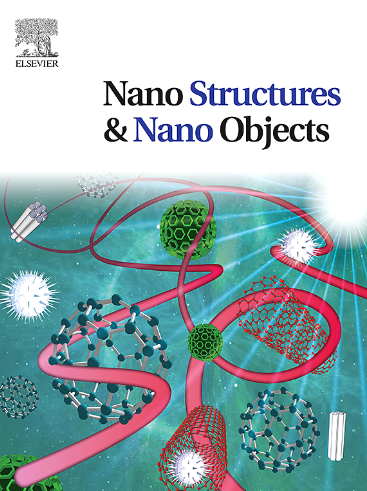A comprehensive review of the use of urea-formaldehyde resin composites for the adsorption of organic and inorganic pollutants from wastewater
IF 5.45
Q1 Physics and Astronomy
引用次数: 0
Abstract
Pollution of water bodies has raised a serious concern, leading to an immediate need to promote effective treatment technologies that can remove organic and inorganic pollutants from wastewater. The review explores the diverse applications of urea-formaldehyde (UF) resin composites as effective tools for addressing wastewater issues. UF resins show great promise in removing organic and inorganic pollutants such as dyes, phenolic compounds, and heavy metals due to their high adsorption capacity, stability, and cost-effectiveness. Recent advancements in the synthesis and modification of UF resin-based composites, particularly through the incorporation of materials like activated carbon and Fe3O4 nanoparticles, have significantly improved their pollutant-binding efficiency and stability under variable environmental conditions. The review also outlines challenges and prospective trends aimed at developing greener hybrid UF composites with greater performance and minimal environmental impact.
综述了脲醛树脂复合材料在废水中有机和无机污染物吸附中的应用
水体污染已经引起了人们的严重关注,因此迫切需要推广能够从废水中去除有机和无机污染物的有效处理技术。本文综述了脲醛树脂复合材料作为解决废水问题的有效工具的各种应用。UF树脂由于其高吸附能力、稳定性和成本效益,在去除染料、酚类化合物和重金属等有机和无机污染物方面具有很大的前景。最近在UF树脂基复合材料的合成和改性方面取得的进展,特别是通过活性炭和Fe3O4纳米颗粒等材料的掺入,显著提高了其在可变环境条件下的污染物结合效率和稳定性。该综述还概述了旨在开发具有更高性能和最小环境影响的绿色混合UF复合材料的挑战和未来趋势。
本文章由计算机程序翻译,如有差异,请以英文原文为准。
求助全文
约1分钟内获得全文
求助全文
来源期刊

Nano-Structures & Nano-Objects
Physics and Astronomy-Condensed Matter Physics
CiteScore
9.20
自引率
0.00%
发文量
60
审稿时长
22 days
期刊介绍:
Nano-Structures & Nano-Objects is a new journal devoted to all aspects of the synthesis and the properties of this new flourishing domain. The journal is devoted to novel architectures at the nano-level with an emphasis on new synthesis and characterization methods. The journal is focused on the objects rather than on their applications. However, the research for new applications of original nano-structures & nano-objects in various fields such as nano-electronics, energy conversion, catalysis, drug delivery and nano-medicine is also welcome. The scope of Nano-Structures & Nano-Objects involves: -Metal and alloy nanoparticles with complex nanostructures such as shape control, core-shell and dumbells -Oxide nanoparticles and nanostructures, with complex oxide/metal, oxide/surface and oxide /organic interfaces -Inorganic semi-conducting nanoparticles (quantum dots) with an emphasis on new phases, structures, shapes and complexity -Nanostructures involving molecular inorganic species such as nanoparticles of coordination compounds, molecular magnets, spin transition nanoparticles etc. or organic nano-objects, in particular for molecular electronics -Nanostructured materials such as nano-MOFs and nano-zeolites -Hetero-junctions between molecules and nano-objects, between different nano-objects & nanostructures or between nano-objects & nanostructures and surfaces -Methods of characterization specific of the nano size or adapted for the nano size such as X-ray and neutron scattering, light scattering, NMR, Raman, Plasmonics, near field microscopies, various TEM and SEM techniques, magnetic studies, etc .
 求助内容:
求助内容: 应助结果提醒方式:
应助结果提醒方式:


